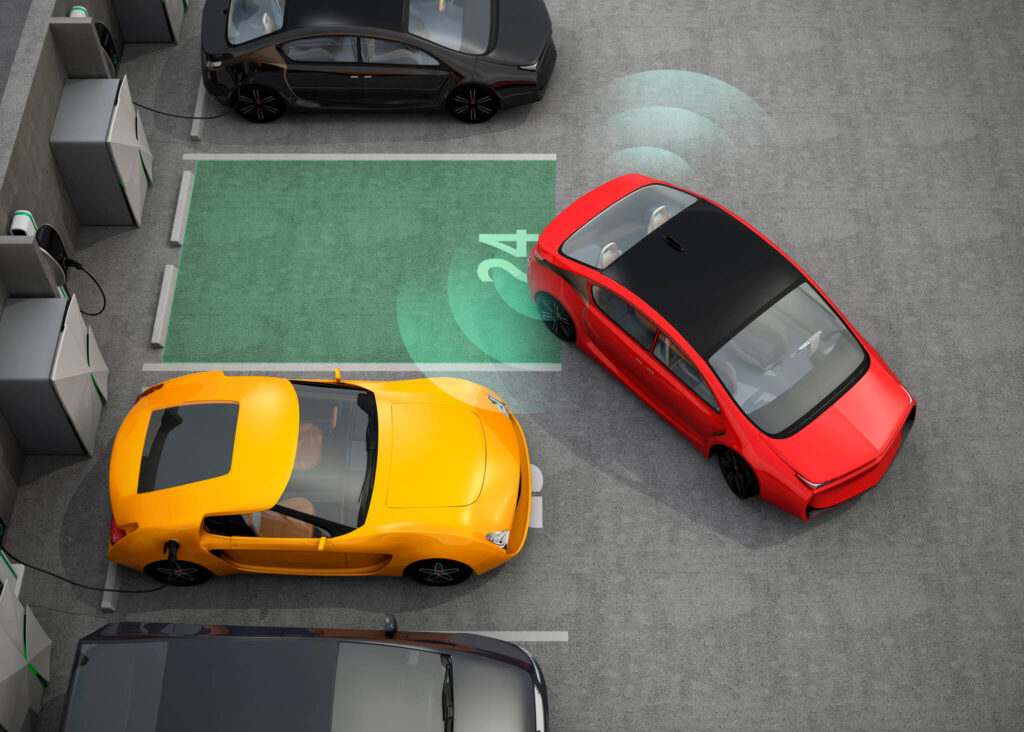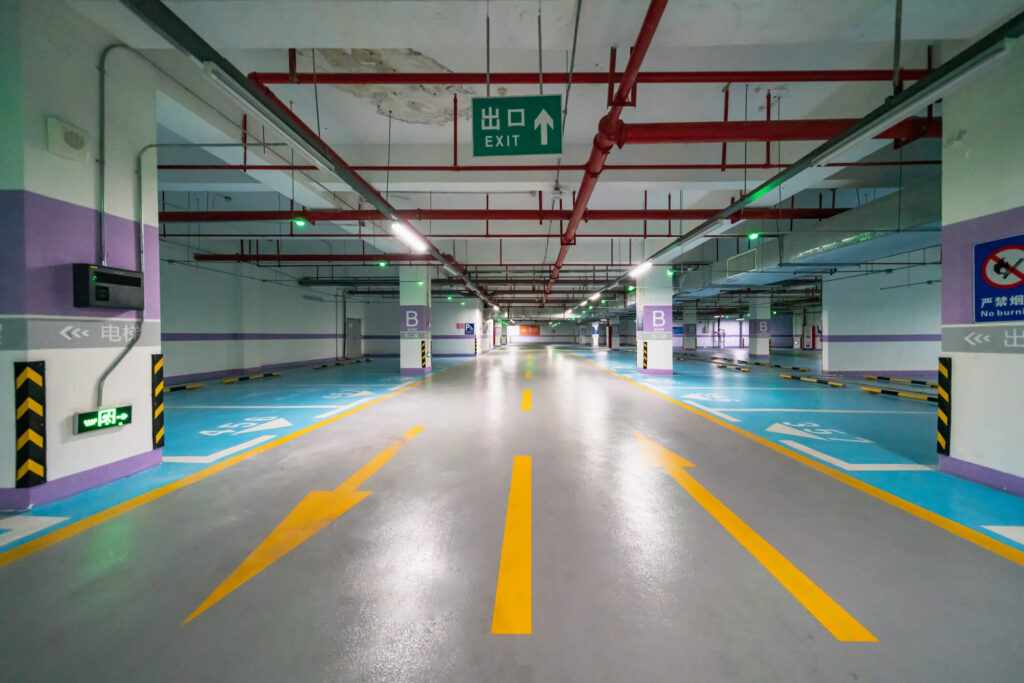Smart parking systems, designed to manage and optimise parking spaces effectively, are transforming urban areas by reducing traffic congestion and pollution caused by the prolonged hunt for parking spaces. The need for effective parking solutions grows as a result of rising urbanisation, with drivers spending up to 20 minutes looking for a spot to park. Projections show that by 2050, up to 80% of the world’s population is expected to live in cities – a huge increase from the current 55%.
Cities can provide more effective parking solutions by using smart parking technologies, such as IoT-enabled smart parking systems, parking management software, and parking payment apps. These tools support the objective of creating less congested and more sustainable urban environments in addition to assisting cars in finding open spaces more quickly. The many benefits and varieties of parking guidance systems currently available are examined in this article, along with the principles of smart parking and the underlying technologies.
What is a Smart Parking System?

By helping vehicles locate available parking spaces quickly, a smart parking system leverages technology to improve the effectiveness of parking management. Real-time monitoring of parking space occupancy is achieved by the integration of sensors, cameras, and IoT devices. Drivers can use digital displays or mobile apps to retrieve this data, which is subsequently sent to a central system and used to direct them to the closest location. Furthermore, by integrating with payment processors and offering insightful data on parking trends, these systems can optimise space use and enhance traffic control in crowded regions.
Key Components and Functions
- Sensors and IoT: Through the use of in-ground or strategically placed sensors, parking data analytics keep track of which spots are available or occupied and instantly notify vehicles through displays or smart parking apps.
- Real-time Data and Mobile Applications: Drivers can check real-time parking updates via apps or in-car systems on their smartphones before they arrive at their destination, thanks to the real-time data from smart parking sensors that are related to a central system.
- Analytics and Reporting: These systems aid in urban planning, traffic pattern analysis, and dynamic pricing modifications based on actual usage by analysing parking utilisation data.
- Automated Payments: The solution streamlines the procedure and permits contactless transactions by letting drivers reserve and pay for parking spaces through an app.
As per Tomorrow.City, a platform focusing on sustainable and inclusive cities, implementing smart parking systems leads to significant reductions in traffic volume by 8%, gas emissions by 40%, kilometres travelled by a car to park by 30%, and time spent parking by 43%. These systems not only provide real-time data on parking availability, enhancing operational efficiency and simplifying traffic flow, but also support cities in advancing towards their carbon neutrality goals by reducing CO2 emissions significantly.
Key Technologies Behind Smart Parking Systems
Ground and Overhead Sensor Technologies
Advanced sensor technologies are used by smart parking systems to increase parking efficiency. Radar is used by ground sensors installed in parking areas to identify moving cars and designate those spaces as occupied. For huge areas or street parking, overhead devices—such as cameras or sensors located above—monitor numerous places simultaneously. Enough coverage and precise real-time data are provided by this dual-sensor technique, which is essential for efficient parking management.
Intelligent Software and AI Applications
The advancement of smart parking systems depends on the integration of AI and machine learning technology. Static cameras are used by AI-driven technologies to identify cars and provide real-time parking occupancy statistics. Moreover, these systems are enhanced with Automatic Number Plate Recognition (ANPR) technology, which makes automatic vehicle identification possible and expedites the entry and leave procedures. These smart parking systems improve operations and may be customised for a variety of settings, such as shopping centres and airports.
Comprehensive Smart Parking Solutions
In order to build integrated and flexible parking solutions, Smart Parking Systems (SPS) leverage a range of technologies, including edge computing, machine learning, and the Internet of Things. These systems come with smart detectors, which use LiDAR technology to monitor parking space availability and notify vehicles via smart signage or mobile applications. Convolutional neural networks and multi-agent systems are especially advised for open car parks because of their cost-effectiveness and capacity to adapt to a variety of environmental circumstances. By minimising the amount of time spent looking for parking, this all-encompassing approach to smart parking improves user experience overall while also maximising space use.
Benefits of Implementing Smart Parking Systems

By improving sustainability, efficiency, and security, smart parking solutions revolutionise urban mobility. By combining cutting-edge technologies, these systems expedite the parking procedure and cut down on the amount of time vehicles must spend looking for a spot. For example, managers can optimise space allocation and future planning with the use of real-time data on available parking spots. Furthermore, autonomous parking barriers that are managed by smartphone apps make it easier to enter and exit.
By cutting down on idle time for cars while looking for a place to park, car parking systems dramatically reduce carbon emissions and the carbon footprint of cities. Along with delivering crucial data that improves urban administration and planning, these technologies also blend in perfectly with frameworks for smart cities. From a security perspective, improved monitoring features, such as real-time updates and licence plate recognition guarantee safer parking areas by foiling any criminal activity and preventing unauthorised access.
With drivers wasting roughly 30% on petrol per year, the development of systems that enable remote parking place availability and location monitoring is crucial. CET Energy, a Teltonika Networks partner, has developed a well-organised Smart Parking project with the use of Teltonika Networks’ RUT241 cellular router and a TSW100 switch making the parking search much quicker, easier and more sustainable.
Types of Smart Parking Systems
Single Space and Multi-Space Sensor Systems
Single Space Sensor Systems use radar embedded in concrete to detect the presence of vehicles, using a single sensor for each parking space. Multi-Space Sensor Systems are perfect for large or street parking spaces as they use a single sensor to monitor multiple places.
Image-Based and Mobile-Based Systems
Image-Based Systems effectively manage parking resources by using cameras to verify parking occupancy. Apps are used by mobile-based systems to notify vehicles of parking spots that are available, increasing convenience and decreasing search time.
Integrated and Off-Street Parking Systems
Integrated systems provide complete, real-time parking information by combining sensors, cameras, and apps. Radar and magnetometers are two cutting-edge technologies used by off-street parking systems, which are expanding quickly, to boost efficiency.
Challenges and Considerations in Deploying Smart Parking Systems

- Awareness and High Costs
- Challenges include user and stakeholder awareness and acceptance.
- High implementation costs.
- Success depends on precise information and the availability of standard IoT tools.
- Talent scarcity in smart technology hampers development and maintenance.
- Technical and Privacy Considerations
- Key factors: accuracy, cost, and privacy risks, especially with continuous camera monitoring.
- Importance of advanced features, aesthetics, and user experience.
- Manual session confirmations may hinder user experience.
- Integration and Regulatory Challenges
- Issues with integrating into existing infrastructure, like compatibility and upfront costs.
- Data privacy and security are critical.
- Government policies and regulations greatly influence system deployment.
- Technological limitations or failures could affect system effectiveness, requiring thorough design and testing.
The Future of Smart Parking
The trajectory of the smart parking market is set for substantial growth, with projections indicating an increase from $38.7 billion in 2023 to $88.8 billion by 2028, reflecting a robust compound annual growth rate (CAGR) of 18.1%. This growth is underpinned by the escalating demand for efficient parking management solutions in densely populated urban areas.
Technological advancements are continuously reshaping the smart parking landscape. Ground sensors, a critical component of these systems, have seen significant enhancements in recent years. With companies like Teltonika Networks, providing network connectivity solutions for optimising parking experience, the industry is steadily moving towards a more connected and environmentally conscious future.
Looking ahead, the integration of Autonomous Vehicles (AVs) represents a pivotal development for smart parking systems. This integration is poised to further streamline parking processes and enhance the efficiency of urban transportation systems. Additionally, the growth of Electric Vehicles (EVs) and electric vehicle charging stations is also changing the way the industry operates. The Asia Pacific region, in particular, is expected to lead the global smart parking market, accounting for more than 40% of the revenue share in 2023 and anticipated to maintain the fastest growth rate throughout the forecast period.
Conclusion
Smart parking systems are essential for cutting down on traffic, pollution, and parking search times in the face of increasing urbanisation. By improving space use and optimising parking procedures, these systems integrate IoT, sensors, AI, and machine learning to facilitate sustainable mobility solutions and improve urban planning.
Urban environments are expected to change in the future due to the advancement of smart parking technologies and their combination with driverless vehicles. These systems have a global influence and are in line with sustainability goals due to their enormous economic and environmental benefits.










